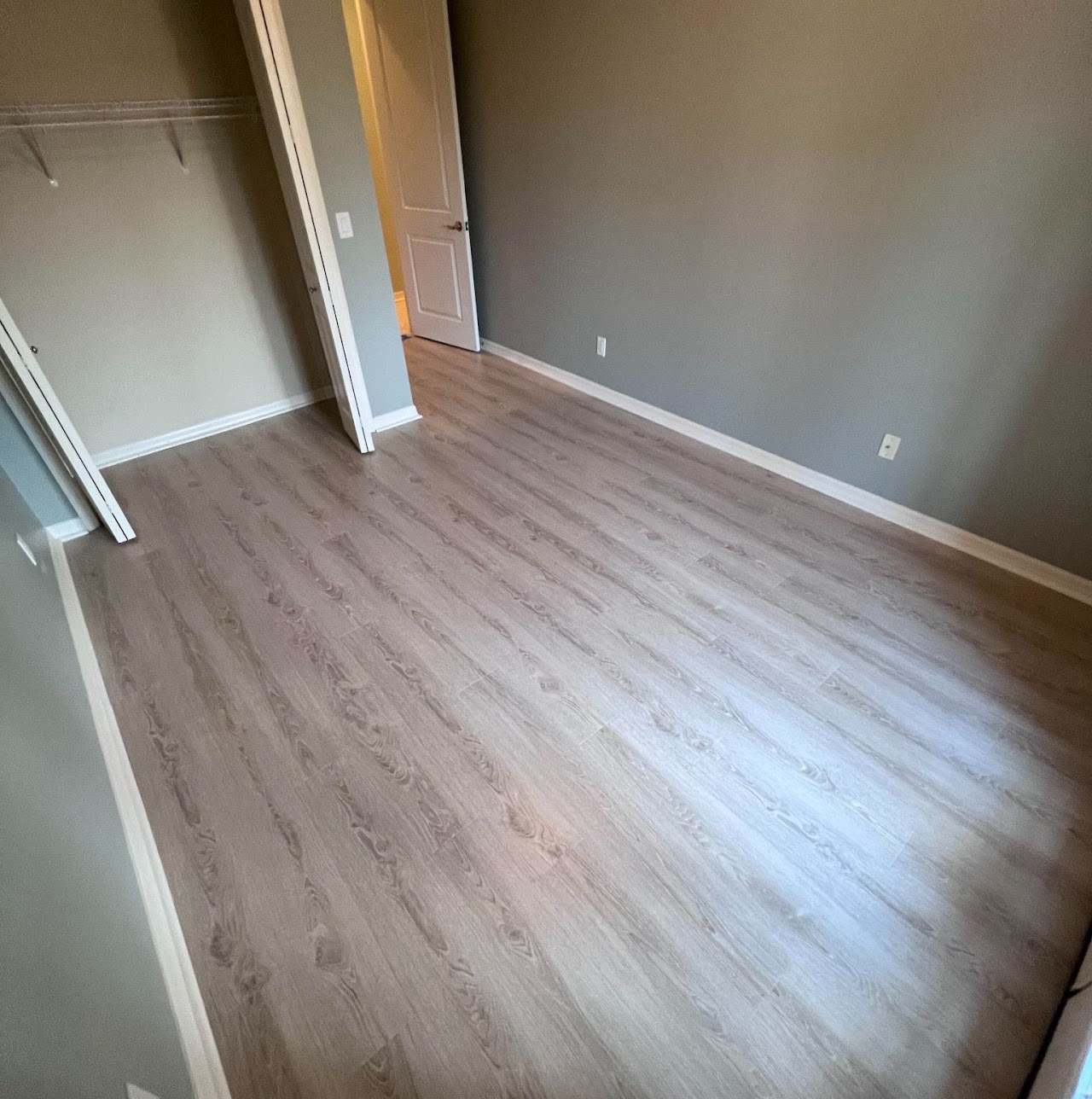-
Insured & Bonded
-
+1 (941) 444-1255
- Client Hub
 Laminate flooring installation is a popular choice for homeowners and businesses alike, offering the look of hardwood or tile at a fraction of the cost. Laminate is composed of multiple layers, including a decorative top layer, a core layer for stability, and a backing layer for added strength. This construction makes laminate highly durable and resistant to scratches, stains, and fading, making it an ideal choice for high-traffic areas.
Laminate flooring installation is a popular choice for homeowners and businesses alike, offering the look of hardwood or tile at a fraction of the cost. Laminate is composed of multiple layers, including a decorative top layer, a core layer for stability, and a backing layer for added strength. This construction makes laminate highly durable and resistant to scratches, stains, and fading, making it an ideal choice for high-traffic areas.
Before installation begins, proper preparation of the subfloor is essential. The subfloor must be clean, dry, and level to ensure a smooth and stable foundation for the laminate flooring. Any existing flooring may need to be removed, and any imperfections in the subfloor should be addressed before installation begins.
Once the subfloor is prepared, the installation process begins with the layout of the laminate planks. Careful planning is required to ensure a balanced and visually appealing arrangement, taking into account factors such as room size, natural light, and traffic patterns.
Laminate flooring can be installed using several methods, including glueless click-lock, glue-down, or pre-glued laminate. The method chosen will depend on factors such as the type of subfloor, the condition of the space, and personal preference.
Glueless click-lock installation is one of the most popular methods and involves interlocking the laminate planks together without the need for adhesive. This method is relatively quick and easy and allows for flexibility in installation.
Glue-down installation involves applying adhesive to the subfloor and securing the laminate planks directly to the subfloor. This method provides a strong and permanent bond, making it ideal for areas with high moisture or heavy foot traffic.
Pre-glued laminate features a pre-applied adhesive on the edges of the planks, which is activated by moisture. This method is convenient and easy to install, requiring minimal time and effort.
Regardless of the installation method chosen, attention to detail is crucial to achieving a professional finish. This includes ensuring tight seams between planks, maintaining consistent spacing around the perimeter of the room, and carefully cutting planks to fit around obstacles and corners.
Once the laminate planks are installed, the finishing touches can be applied. This may include installing baseboards or trim pieces to cover any gaps between the flooring and the walls, as well as applying a protective finish to enhance the durability and appearance of the laminate.
After installation is complete, it's important to allow sufficient time for the laminate to acclimate to the environment before moving furniture back into the room. This typically involves waiting at least 24-48 hours to allow the laminate to adjust to the temperature and humidity levels of its new surroundings. Reach out to us today to get started on your next project.
